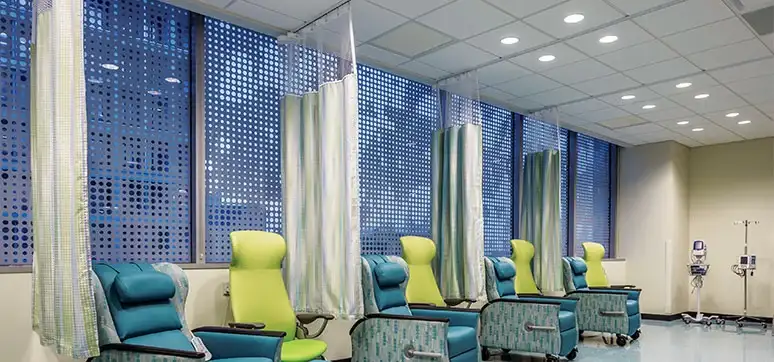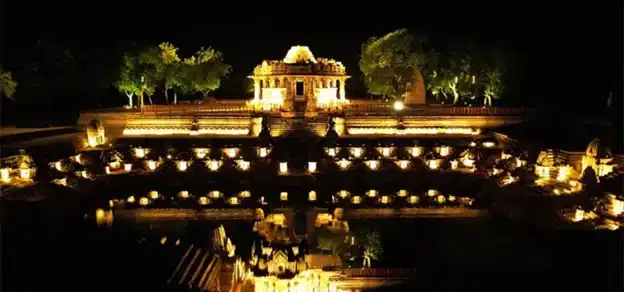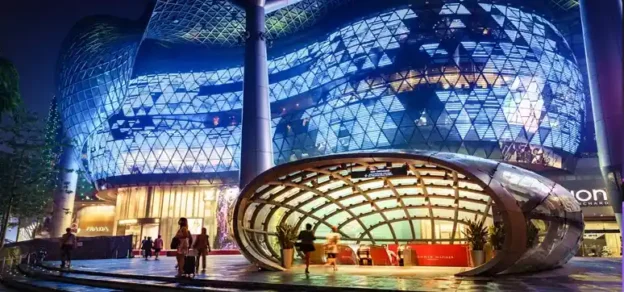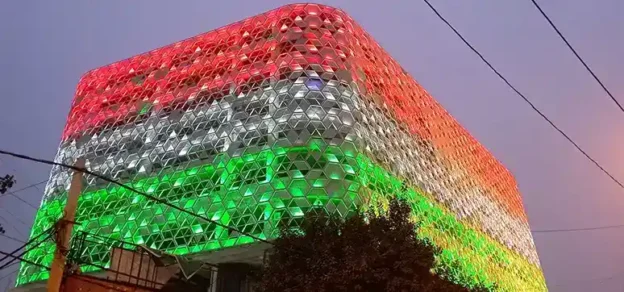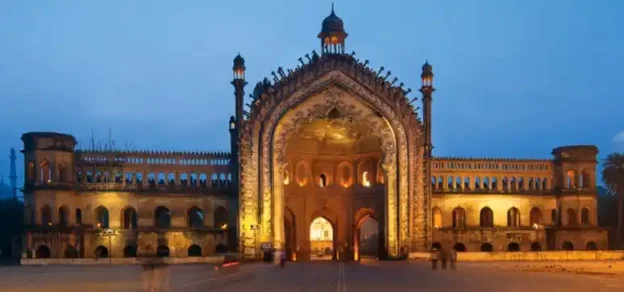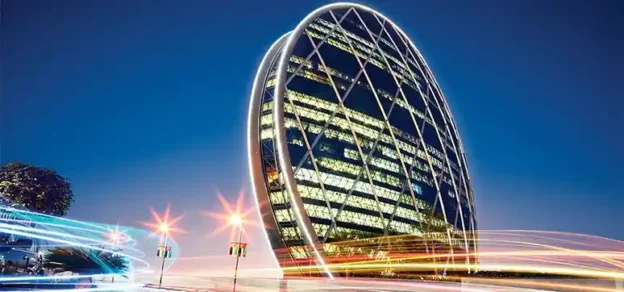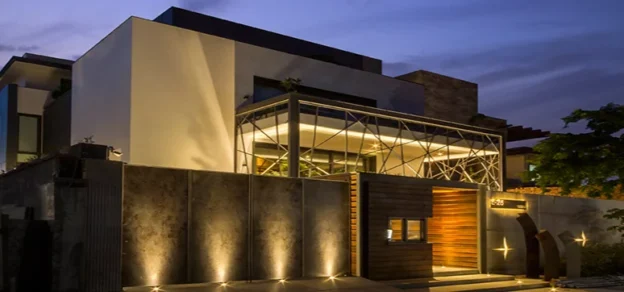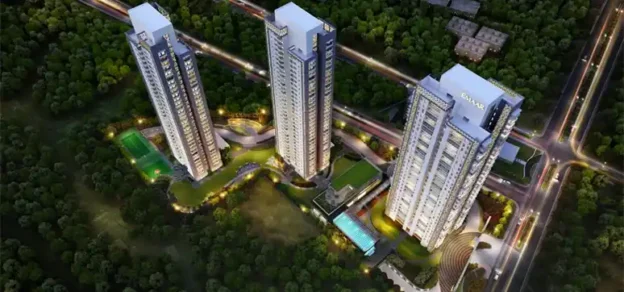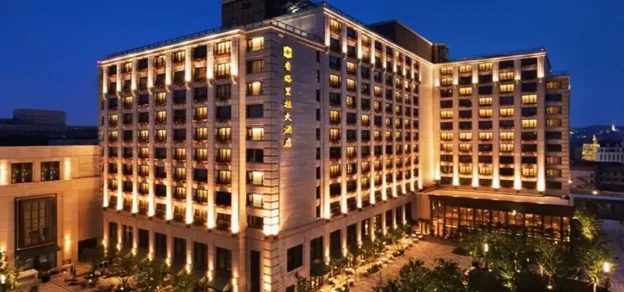Light has always played an important role in building design and construction. A building cannot be functional without access to light. Lighting design is mainly characterized in two categories, natural and artificial lighting. Both lighting possibilities have an acute effect on indoors and outdoors during different times of a day through the fenestration of the building.
The effect is defined in terms of views exchange, impact on the environment, the health of occupants, etc. There are various tools such as Grasshopper in Rhino, IES, Sefaira, etc. that help to understand these effects before the actual construction of the building. Therefore, a building’s façade design plays a very important role in the indoor outdoor relationship of lighting.
Daytime
The key to façade design is the relation between the outside sunlight and its interaction with façade to allow the daylight to enter inside the building to facilitate various functions. Not only does this make the building more energy-efficient, but it is also healthy for the occupants of the building. As per various research, daylight is known for regulating our circadian rhythm and keeping our mental health in check. The exposure to light has a direct relation with the impact on the eyes as well. Therefore, an appropriate amount of day lighting should be incorporated during façade design which meets the melanopic lux level requirement (200 melanopic lux).
Lux levels are always calculated at 1.2m from the finished floor facing the vertical plane being measured. The interior space should be checked to meet all the light temperature and colour rendering index while designing the façade and installing the light. The design of an optimal façade with the incorporation of daylight entering the building, not only regulates the body-clock of occupants and decreases the energy requirement but also gives access to outdoor views to the occupants and increases their productivity.
Night-Time
Interaction of indoor to outdoor lighting is not just restricted to daytime but has a major significance during night-time as well. During the night, the indoor light is scattered outside around the building, creating a light halo around a building through its fenestration. This tends to create glare and light trespassing.
This type of light is called the waste light, it does not contribute towards night-time safety, utility or security, but consumes energy and disturbs the flora and fauna. The lighting requirement and directions should meet the outdoor lighting zone requirements to avoid light pollution during the night. This can be done by meeting the required considerations during the design of the façade and choice of lights.
Choice of lights include the design of luminaire, intensity, colour temperature, colour rendering index for all indoor space, outdoor space and façade itself. Various types of light filtering glasses can be used to prevent the disturbance in the path of migrating birds and the growth of plants.
Technology is moving at a very high speed and kinetic façade (dynamic façade) is making it easier to achieve the day-time and night-time lighting requirements without compromising on aesthetics and energy efficiency.
The support of tools such as Ladybug, Diva, and Honeybee with Arduino helps in the overall optimal design of the façade at an early design stage. A building façade is treated and tested properly at the design stage to meet the predicted EUI (Energy Use Intensity) of the project and make it healthy for occupants at the same time.
Children’s Hospital of Richmond CHoR: Panels
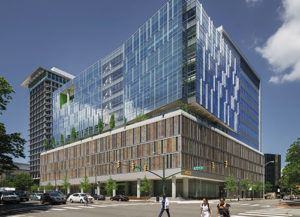
In collaboration with Zahner Metals, HKS Mid Atlantic Design (MAD LAB) developed a screen system for the Children’s Hospital of Richmond (CHoR). A parametric model utilising Grasshopper for Rhinoceros 3D was created to explore the relationship between various hole sizes and the spacing between them, considering variables such as air filtration, dye punch size, light filtration and aesthetic preference.
Biophilia And Light : In keeping with the metaphorical references to nature, the concept for screen and light quality within the parking garage came from the dappled light effect much like sunlight filtered through tree canopies in a forest. Extrapolating this information from the concept, a pattern was developed based on the camouflage algorithm used by the military to mimic foliage patterns found in nature.
Children’s Hospital, Delhi
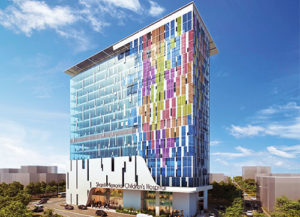
The Children’s Hospital in Delhi was a big challenge for maintaining a healthy and energy-efficient hospital for children. The façade design concept derives from the superhero cape and signifies the protective nature. It was categorically distributed with coloured solar panels in place of glazing (LOF solar cells) for generating the energy through the façade and yet keeping it interactive and colourful.
The façade design went beyond the aesthetics to meet the melanopic lux levels for all the patient rooms to increase the healing and synchronisation of the circadian rhythm. The dynamic feature of the façade at night decreased the light pollution by decreasing the intensity of the light halo around the building.
Kachumbla, Uganda

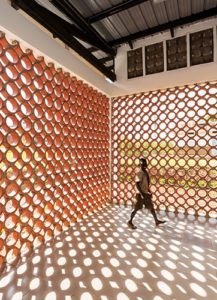
The design not only provided for thermal comfort, but also for natural light and improved healing. The predominant building material, interlocking soilstabilised blocks, were handmade on-site using locally arising Murrum mixed with cement in a brick press, which reduced both cost and the need for power tools.
HKS partnered with Wales-based Charity Engineers for Overseas Development and Clyfe Building Skills to design, fund and build the new maternity unit. The jaali façade extends the play of light to give the connection with outdoors and provide thermal comfort in the heat of the place.
